Membrāne
Solo exhibition, Thomas Rehbein Gallery 2024
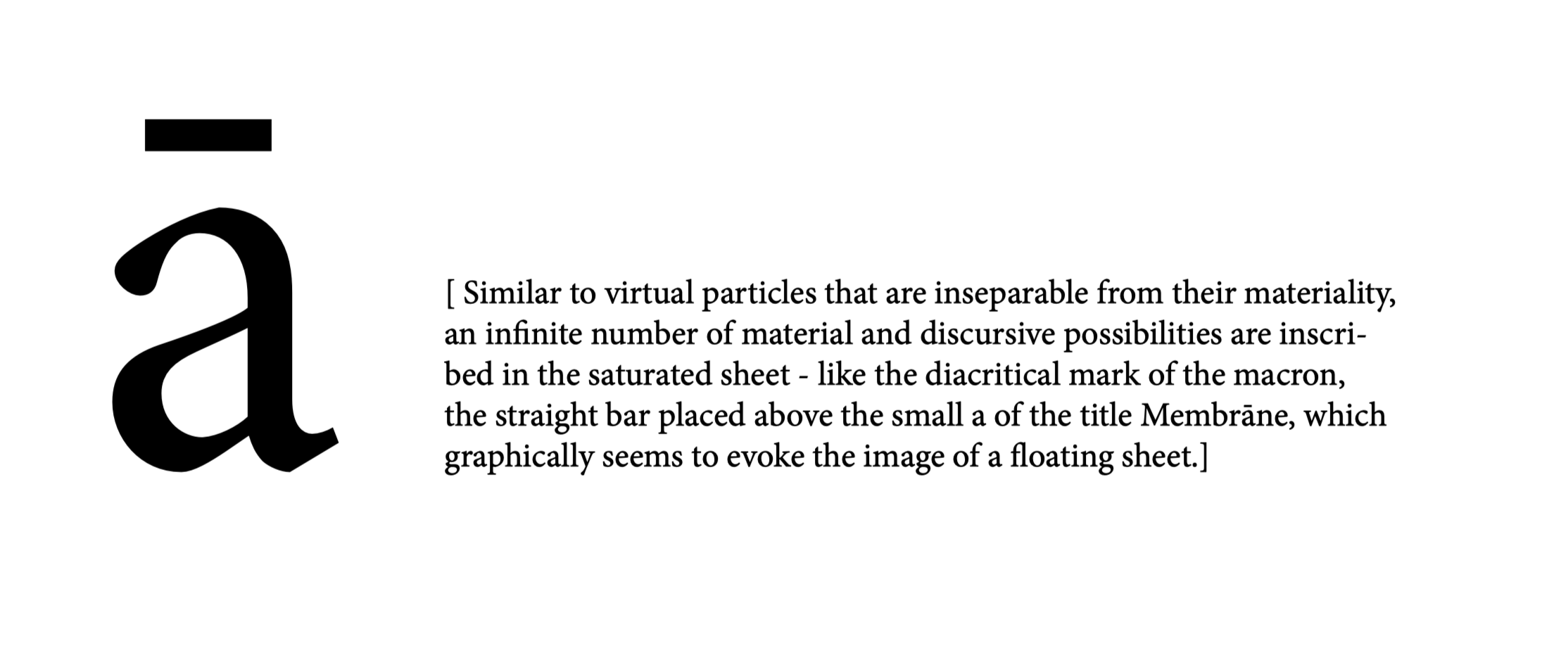

A white sheet is not just a blank surface. A sheet is a fibrous fleece of organic matter or a sea of red, green and blue light-emitting diodes. A sheet is a sensitive projection plane, skin, probe and softly swaying recording instrument. A sheet can be an opaque window and a realm of infinite strain and exhaustion. A sheet is a place of incessant questioning and being questioned. A membrane is understood to be a sheer layer of tissue that both separates and joins two spaces. Based on the etymological link between human (skin) and non-human corporeality (parchment), the exhibition Membrāne by Pauline Hafsia M'barek focuses on the semi-permeable material quality of the blank sheet in reference to the discursive figure of the In-between. Analogous to a membrane, the sheet becomes a surface for osmotic transfer allowing processes of exchange and transformation between inside and outside to continuously take place. Through various performative experiments and microscopic investigations, the artist examines the sheet as a porous medium while exploring the fluid-firm material quality of paper respectively. Paper is subjected to various transformations: Pages are touched by probing fingers and atmospherically marked by falling rain. Paper is formed from dust or turns into liquid.
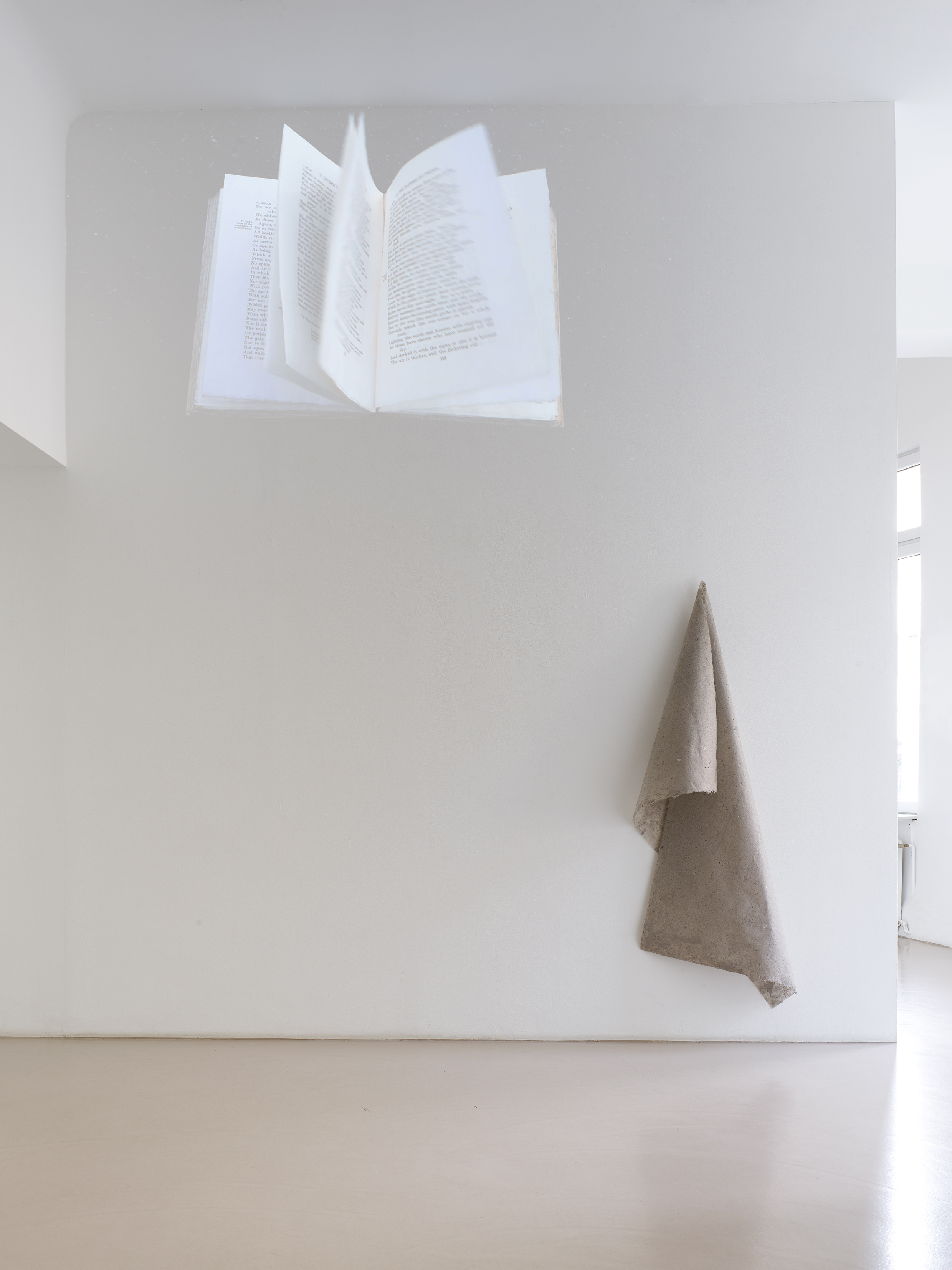
In this regard, wind, water and light are always co-producers that act as forces of resistance or variables. Specific inherent laws and forces manifest themselves unpredictably and demand cooperation and/or adaptation in a constant balancing act between control and chance, observation and experience. In the video Aufzeichnung/ Recording (2022), a white sheet of paper soaked with water transforms into a transparent skin. Upon first sight, the sheet, which is suspended from a line in the rain, appears dark and weightless against the backdrop of a cloudy sky. Continuously, drops fall and touch the sheet, which becomes increasingly wet as the rain leaves more and more light marks that eventually cover its surface. The sheet makes visible what the eye cannot see. Depending on the density of the drops, the direction and force of the wind, alternately white lines, dots and spots appear. As the sheet flutters in the wind and the linear traces gradually thicken, rain gathers at the bottom rim as a liquid seam and slowly drips off. Finally, the sheet is completely saturated, inert, transparent. Hardly any difference can be discerned between the sky and the sheet.

The absorption of water by a sheet of paper is the starting point of the video Chagrin (2021). A pair of tweezers places a single, quivering drop of water on the semi-permeable cellulose material. Not all of its substance seeps through at the same pace if at all. As a force of resistance, the surface tension of the waterdrop enables the persistence of the smoothly curved surface of the drop. It comes to reflect its surroundings in which a window appears that resembles a white sheet due to its flatness. Slowly, as the drop empties into a slight puddle, the window moves closer until only the sky is visible. Merely a spark lingers briefly as a faint trace of the drop before it dries and is fully absorbed by the paper.

The video Kontaktbild/ Contact image (2024) demonstrates a particularly gentle tactile experience. Fingers approach a moist, fibrous paper surface from behind, shown in extreme close-up. The actual incident of a physical encounter between human and non-human skin, a soft touch, occurs. Pink papillary lines appear like ghostly traces on the surface. Touch emerging from within. The projected image merges with the skin´s surface. In Pauline Hafsia M'barek's works, the sheet of paper counters its passive status as a blank, receptive surface, an undefined ground. In fact, it reacts to moisture, air movement, touch and light, proving to be vital, both resilient and transformative; it bears multiple haptic, optical and acoustic qualities and is not least a habitat for microorganisms. As a medium paper here is treated as a subject of investigation. Like skin it proves to be less a stable boundary than a vibrating, semipermeable contact zone that is sensitive and susceptible to change. Similar to virtual particles that are inseparable from their materiality, an infinite number of material and discursive possibilities are inscribed in the saturated sheet - like the diacritical mark of the macron, the straight bar placed above the small a of the title Membrāne, which graphically seems to evoke the image of a floating sheet.
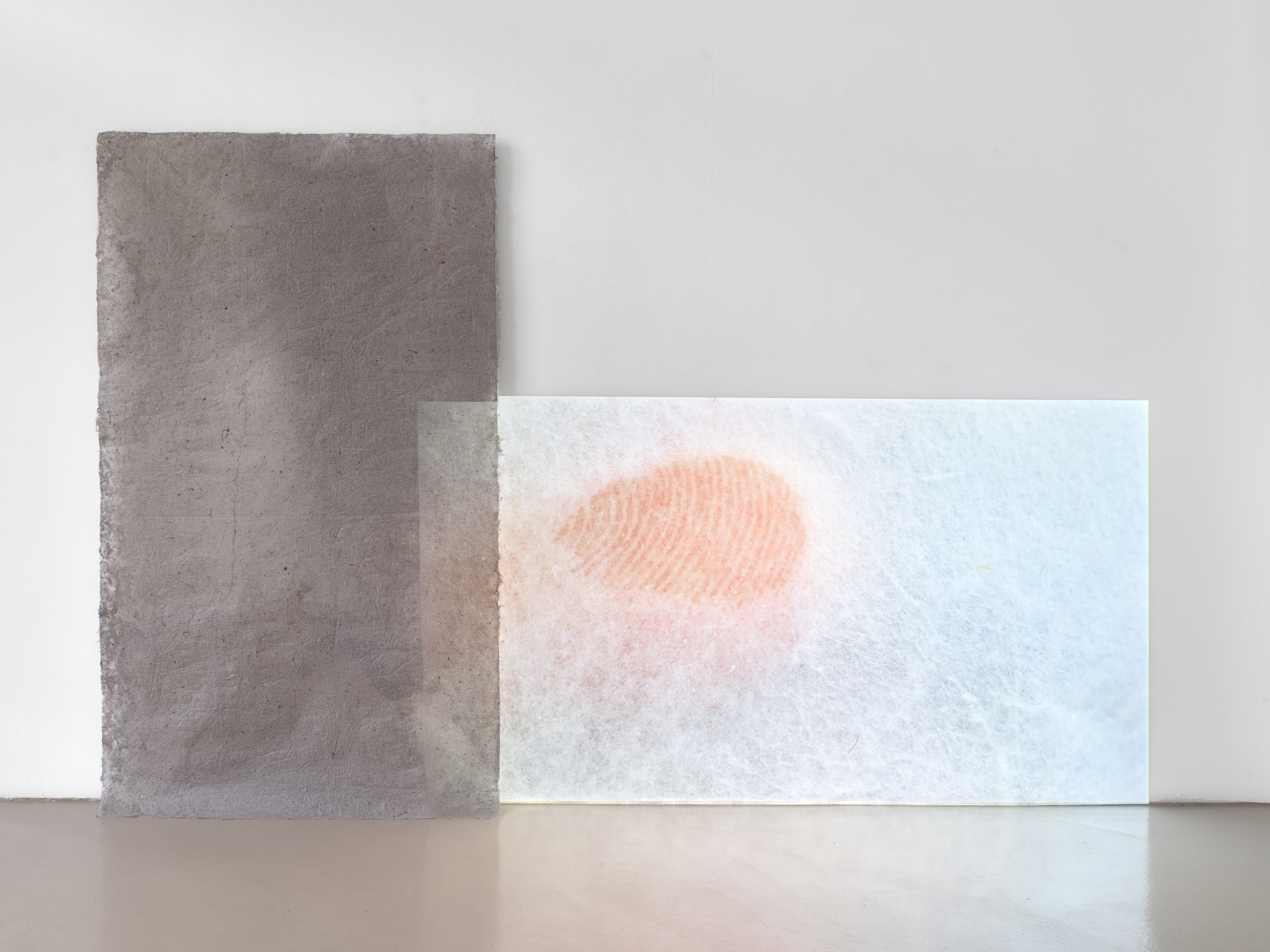
A sheet is also an electronically transmitted light phenomenon, a phenomenon crossing medial boundaries. The video I (2024) presents a blinking black cursor in close-up view amidst an array of colorful light-emitting diodes that form the digital sheet: a luminous spectacle of color, alive and vibrant in the depths of the uniformly white screen surface. Pulsating agitation, persistent prompting in the rhythm of the beating heart: Here you are; here you should continue writing. Every character entered corresponds to a signal that is switched off. While light is the carrier, omission is the sign(al).
Pauline Hafsia M'barek's works explore moments in which the completed art work detaches itself from its representative context in order to foreground its material conditions and underlying creative process. Rather than imposing a form on the sheet, the works testify to a compliance to the unique properties of the sheet itself. During her engagement with the material the artist remains in a withdrawn, observant position. Highly alert, she takes notice of her interferences in the process of finding form, her actions oscillating between impulse-giving and observation. Her main interest lies in processes involving tactile approximation and dynamic becoming. With this in mind, she operates in experimental set-ups in which the works evolve out of each other. Examining, writing and thinking constitute an organic process and actively interact with research networks originating from diverse contexts and referential systems: from ancient natural philosophy to New Materialism, from historical paper production methods to explorations of digital organics. The material and the discursive subject are intricately connected throughout.
This is also the case in the projection Untitled (2024), which reveals an open book lying on the floor. It contains the poem On the Nature of Things by the Roman poet Lucretius. A rising wind gently turns the pages of the book, then becomes stronger and causes the pages to adhere to each other. Finally, it rushes in strongly, flipping back and forth the pages arbitrarily. Through the fluttering and slamming, the powerful materiality of the book becomes palpable. In this flapping, agitated to and fro, the wind gains creative momentum as a firmly grasping, guiding hand bringing forth a new, non-linear text assembly.
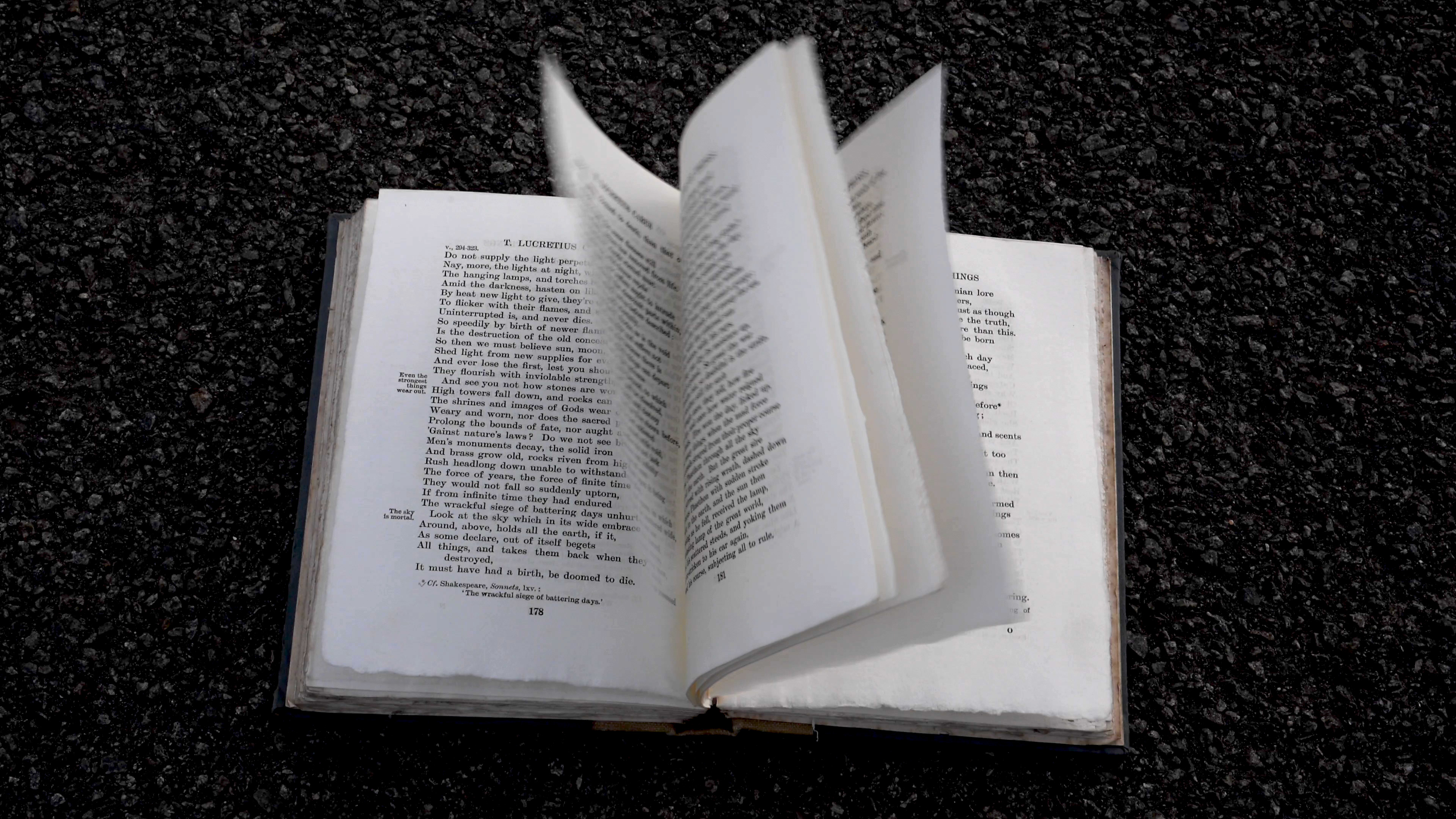
In the video Simulakren/ Simulacrae (2024), which is presented on a screen, glittering, rainbow-colored apparitions and flickering, scattering images appear against a dark background. Those shimmering, emphemeral light apparitions are regularly interrupted by a spontaneous physical movement of self-touch: the blink of an eye. An ophthalmoscope, which employs a single, point-shaped light source to examine the back of the eye (the retina), serves the artist to explore her own eye as she directs her gaze into the magnifying lens in the dark. Through the mutating, shimmering surface featured, the video reveals the process of sight itself.
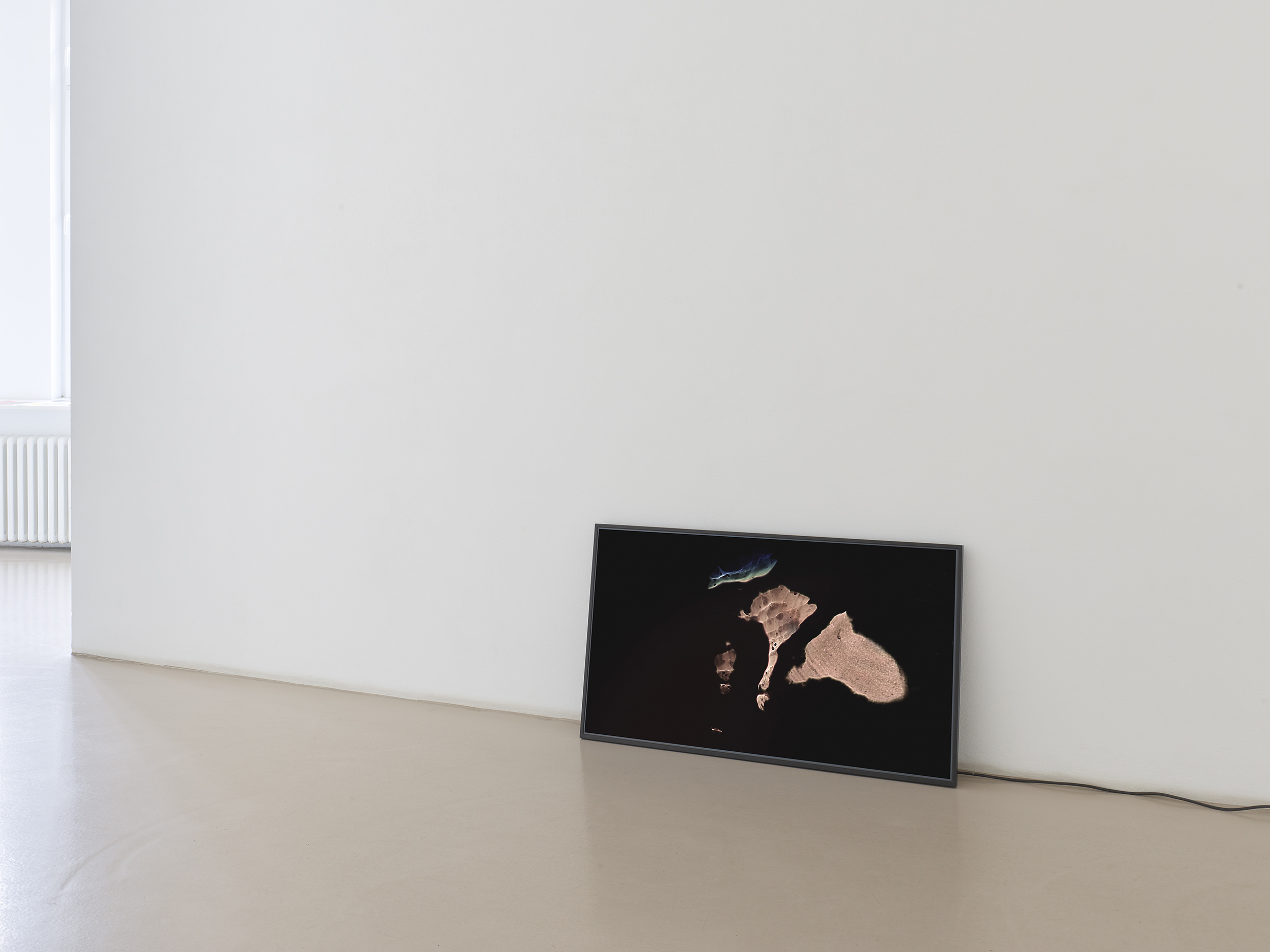

A small, round object about the size of an eyeball is placed on a wall in a remote corner of the exhibition. It consists of a sheer, grayish outer shell surrounding a spherical body with a round opening: a small wasp's nest. The delicate nest walls are built from chewed, weathered wood mixed with saliva and attain a fine, parchment-like consistency. A wide variety of researchers over the past millennia was inspired to the production of paper by this fabrication.

Which fibers and particles does one´s own existence leave behind? Which residual products from material decay could be used to produce fibrous fleece?
Index (2024) consists of differently sized fabrics that are suspended in space like fragile skins and react to the slightest aerial commotion with movement. From a distance, they appear to be monotonously grey; their fibrous structure and colorful diversity only become visible in close proximity. Their surfaces are rough and uneven, yet occasionally disrupted by a glistening spark. Some areas are extremely thin, almost translucent, the borders appear hairy and frayed.
Accumulations of dust from various households, consisting of road debris, colorful clothing fibers, human and animal hair, feathers, seeds, plant particles, food scraps, glossy adhesive strips and many more indefinite materials were crushed and mixed with water and paper leftovers. This pulp was then scooped out of a basin with a frame (called a screen). The resulting cast paper comes into being as an index of past material components, now amalgamated into a mass of matted micro-traces difficult to distinguish. Paper is not a surface for inscription or recording, but rather an organic memory of the materials involved in everyday life.
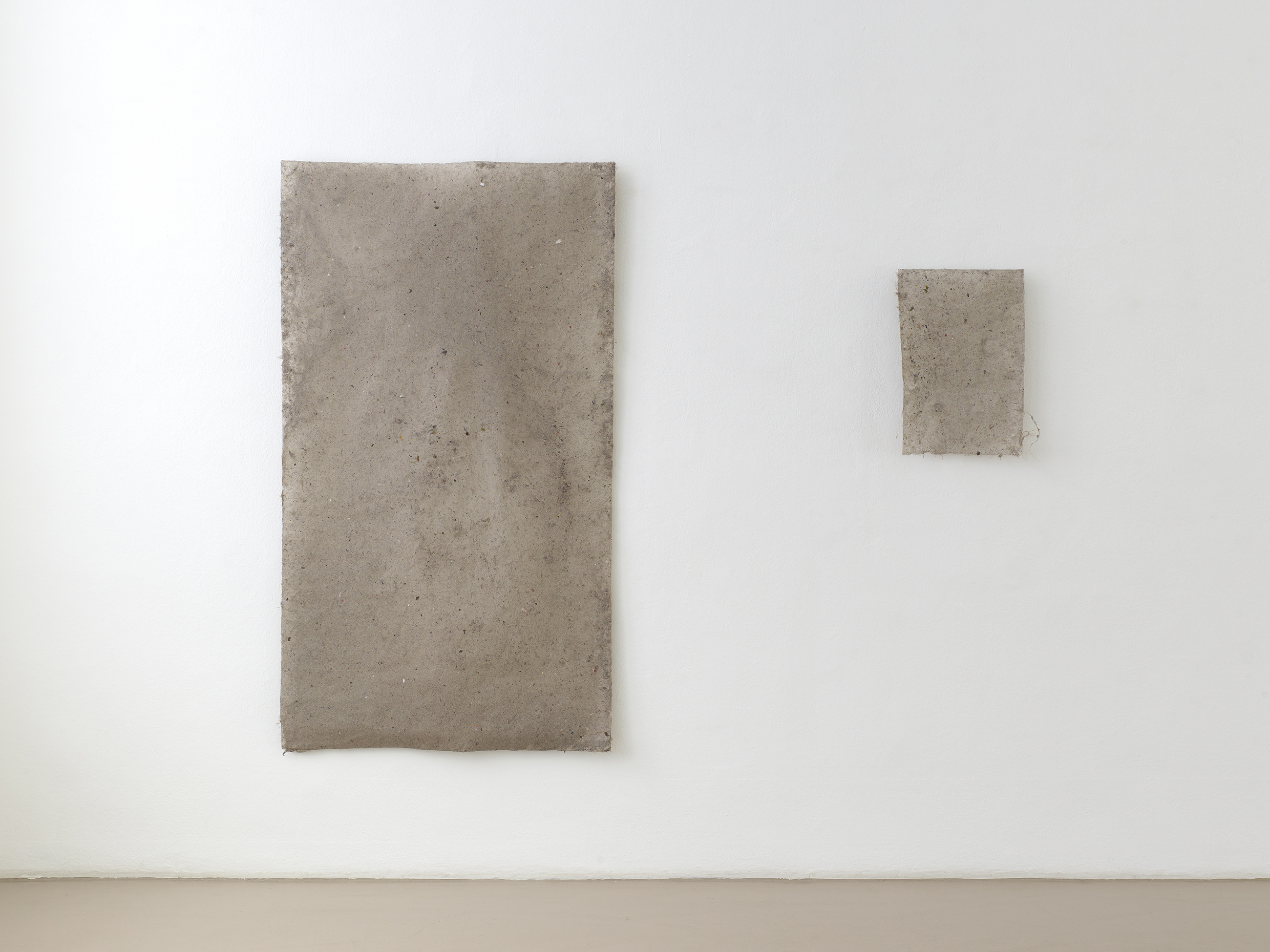
Open-ended experimentation, a process taking into account what emerges within it, is essential to Pauline Hafsia M'barek's artistic practice. Her work is determined by an intuitive compliance to the conditions of the materials involved and affected by numerous impressions from countless observations, self-experiments and readings. The artist submits herself to a set of interests that expands exponentially. She becomes immersed in a vertiginous maelstrom of interrelated phenomena that propel her from the realm of the microscopic into the world and give rise to confusing entanglements and exhaustion.
Click by click, sheet by sheet, while papers pile up, windows overlap eyes become irritated and the computer slows down. The world infiltrates continuously and incessantly.It eludes depiction through an image, and must rather be regarded as a universal system proliferating and ramificating possibilities of encounter.
The figure of the sheet as a membrane represents the permeability and porosity of the process of artistic research with its manifold interdependences between resilient research object, technical device and perceptive human body.
How do you write collaboratively about something that is in the process of becoming or whose form directly corresponds to research itself? Not writing about but with the material and one's own body. A collaboratively written text must always be a fiction, whereas the exhibited works present provisional embodiments. As such, these refer to connecting links between them rather than positing completed or closed results. Throughout this process, alternating discursive as well as material instigations and tangencies arise. Text and exhibition thus are productively engaged, evolving out of each other.
In its arrangement of various video projections, works on paper and sculptural objects, the exhibition articulates subtle dynamics of inquiry reflecting the conditions and methods of its own making. This reveals a space of micro-phenomena oscillating between analog and digital spheres, a space of vibrant agitation and delicate contact: Approximations to an elusive visuality that repeatedly slips away and remains precarious.
A collaborative text by Alisa Kronberger and Pauline Hafsia M'barek (translation by Bettina Haiss)